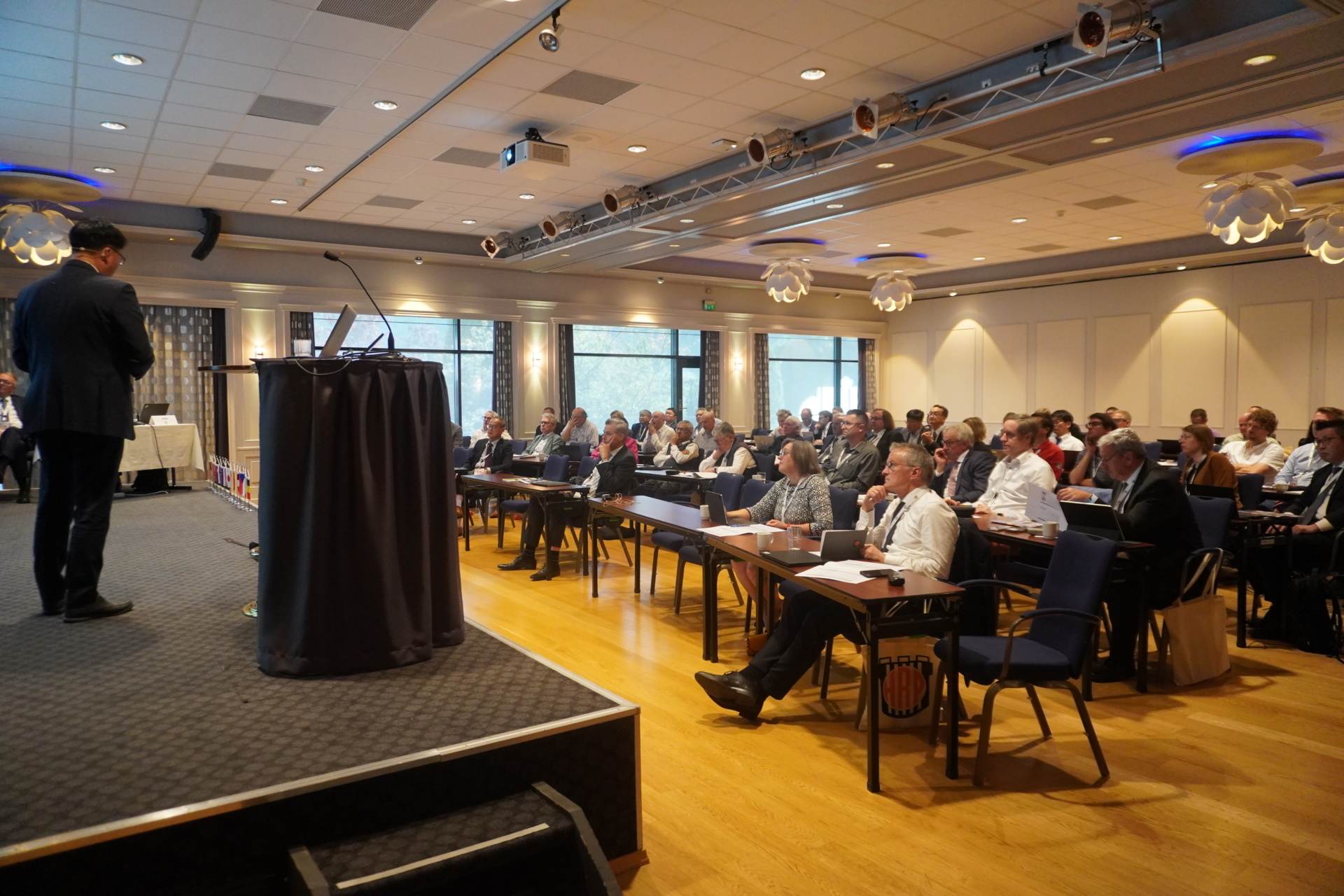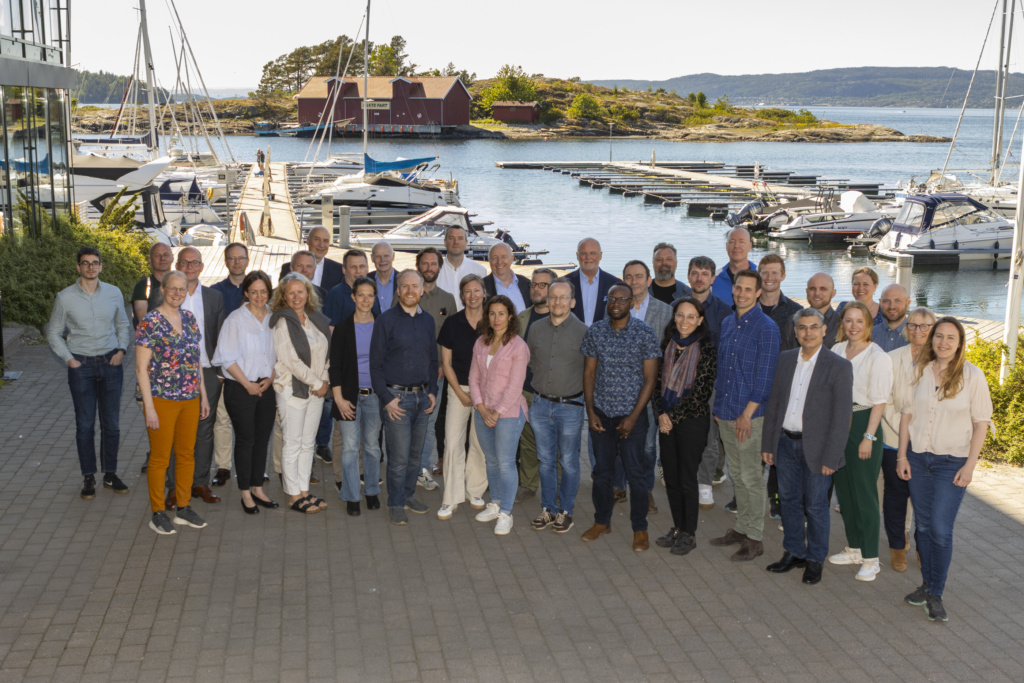Almost 90 participants from 15 different nations are gathered this week in Loen for the final program conference of the original nuclear safety project. The project, named the OECD Nuclear Energy Agency Halden Reactor Project has been managed by the Institute for Energy Technology (IFE) since its inception in 1958. Since IFE shut down the Halden Reactor in 2018, the part of the project related to fuel and materials research has reached its concluding phase. The project will officially end in 2026.
In Norway, the project is commonly referred to as the Halden Project (in Norwegian: Haldenprosjektet).
It truly has put Norway on the world map
Jon Kvalem has been involved in the Halden Project since 1982, and is the current project manager for the completion of the research program. Kvalem points out that the project has played an essential role in building IFE’s positioning nuclear safety and has contributed to improving nuclear safety internationally.
The project has involved over twenty different nations over the course of 65 years, and has created values worth several billions. All the great powers have at some point been members of the project, and I believe that is unique in and of itself. Creating a common understanding of the importance of nuclear safety research contributes to a better world for all of us. We are proud of the fact that the most renowned project in the field of nuclear safety has been managed by IFE in Halden.
Jon Kvalem
Project manager Halden Reactor Program
The conference is attended by key representatives from regulatory authorities, industry, research institutions, and nuclear power plant owners from various countries. According to Kvalem, this is a signal that the project still holds an important position in the field of nuclear safety.

An important project for the OECD
Director-General of the OECD Nuclear Energy Agency, William D. Magwood IV, highlights the significant role the project has played in international nuclear safety research.
In the history of technological advancement, it is difficult to identify an undertaking that has been more impactful and enduring than the Halden Reactor Project (HRP).
William D. Magwood IV
Director-General, OECD Nuclear Energy Agency

A vital project for IFE
Nils Morten Huseby, CEO of IFE, is thrilled to attend the final program conference for the project, stating that IFE wouldn’t be the institute it is today without the Halden Project.
The Halden Project and research on nuclear safety have played a crucial role in the buildup of IFE. Without OECD’s support, it wouldn’t have been possible to operate the reactor in Halden for so many years and develop the unique expertise that IFE possesses in Halden. This project is OECD’s longest-running nuclear project and Norway’s longest-running international research project. It’s a unique endeavor that has laid the groundwork for the expertise IFE can contribute to international cleanup efforts after nuclear accidents and future decommissioning work.
Nils Morten Huseby
CEO IFE
Research on Human, Technology, and Organization Continues
The Halden Project began with research on fuel and materials, but over the years, it evolved to also focus on human, technology, and organization (HTO) aspects. For instance, how a control room operator handles a stressful situation. This aspect of the Halden Project was established as a separate project in 2021 named the Halden HTO Project and will continue in the years to come.
About the Halden Reactor Project
The Halden Project, or OECD NEA Halden Reactor Project, was established in 1958. The conference itself is named the Enlarged Halden Reactor Programme Group meeting (EHPG). Throughout its existence, the project has had 27 member countries and has generated value worth several billion. Around 1980, the project expanded its portfolio beyond fuel and materials research to also encompass how human factors affect nuclear safety, such as in a control room. This part of the Halden Project eventually became known as Human, Technology, and Organization (HTO). This research activity was separated from the Halden Project in 2021 and will initially continue until 2027, with possible extension.
About the OECD Nuclear Energy Agency (NEA)
The OECD Nuclear Energy Agency (NEA) was established in 1958 with the goal of assisting member countries in maintaining and further developing, through international cooperation, the scientific, technological, and legal basis required for the safe, environmentally friendly, and economically viable use of nuclear energy for peaceful purposes. Today, the Nuclear Energy Agency has 34 member countries and closely collaborates with the International Atomic Energy Agency (IAEA).
About the Institute for Energy Technology (IFE)
IFE was founded by the Norwegian government in 1948 to develop Norway’s nuclear research. Norway was a pioneer in nuclear research and was the sixth country in the world to build a nuclear reactor when the first reactor was commissioned in 1951. IFE has built and operated four research reactors, three at Kjeller and one in Halden. The Halden reactor was shut down in 2018, and the reactor at Kjeller was shut down in 2019. The dismantling of Norway’s nuclear program involves extensive cleanup efforts that will last for several decades.
IFE is an independent foundation located in Kjeller and Halden. The institute serves both Norwegian and international clients. IFE is one of Norway’s largest research institutes with around 720 employees. The institute has a leading research environment in areas such as renewable energy, digital systems, nuclear technology, radiopharmaceuticals, and industrial development.


